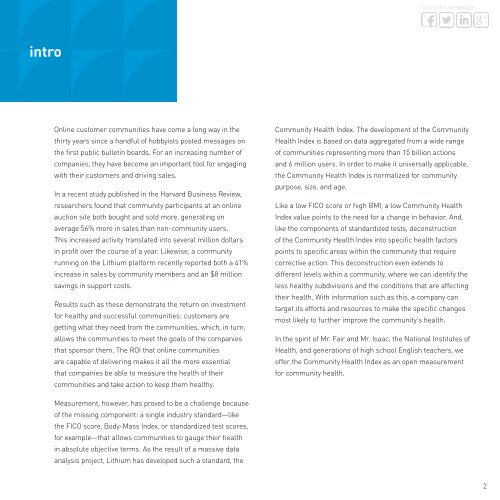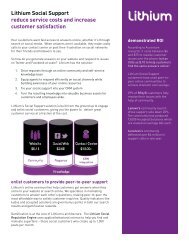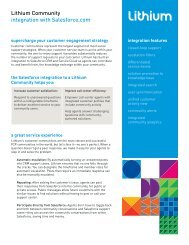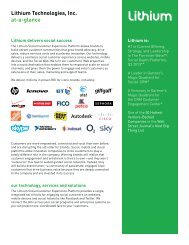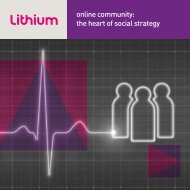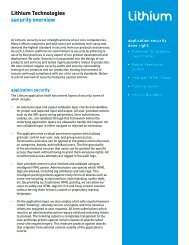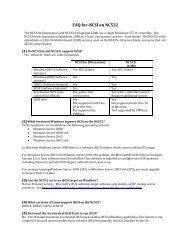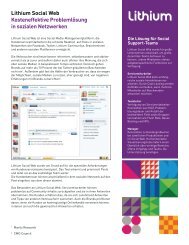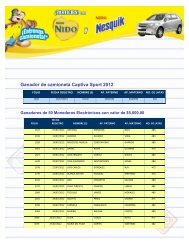Community Health Index - Lithium
Community Health Index - Lithium
Community Health Index - Lithium
Create successful ePaper yourself
Turn your PDF publications into a flip-book with our unique Google optimized e-Paper software.
intro<br />
Online customer communities have come a long way in the<br />
thirty years since a handful of hobbyists posted messages on<br />
the first public bulletin boards. For an increasing number of<br />
companies, they have become an important tool for engaging<br />
with their customers and driving sales.<br />
In a recent study published in the Harvard Business Review,<br />
researchers found that community participants at an online<br />
auction site both bought and sold more, generating on<br />
average 56% more in sales than non-community users.<br />
This increased activity translated into several million dollars<br />
in profit over the course of a year. Likewise, a community<br />
running on the <strong>Lithium</strong> platform recently reported both a 41%<br />
increase in sales by community members and an $8 million<br />
savings in support costs.<br />
Results such as these demonstrate the return on investment<br />
for healthy and successful communities: customers are<br />
getting what they need from the communities, which, in turn,<br />
allows the communities to meet the goals of the companies<br />
that sponsor them. The ROI that online communities<br />
are capable of delivering makes it all the more essential<br />
that companies be able to measure the health of their<br />
communities and take action to keep them healthy.<br />
Measurement, however, has proved to be a challenge because<br />
of the missing component: a single industry standard—like<br />
the FICO score, Body-Mass <strong>Index</strong>, or standardized test scores,<br />
for example—that allows communities to gauge their health<br />
in absolute objective terms. As the result of a massive data<br />
analysis project, <strong>Lithium</strong> has developed such a standard, the<br />
share this whitepaper<br />
<strong>Community</strong> <strong>Health</strong> <strong>Index</strong>. The development of the <strong>Community</strong><br />
<strong>Health</strong> <strong>Index</strong> is based on data aggregated from a wide range<br />
of communities representing more than 15 billion actions<br />
and 6 million users. In order to make it universally applicable,<br />
the <strong>Community</strong> <strong>Health</strong> <strong>Index</strong> is normalized for community<br />
purpose, size, and age.<br />
Like a low FICO score or high BMI, a low <strong>Community</strong> <strong>Health</strong><br />
<strong>Index</strong> value points to the need for a change in behavior. And,<br />
like the components of standardized tests, deconstruction<br />
of the <strong>Community</strong> <strong>Health</strong> <strong>Index</strong> into specific health factors<br />
points to specific areas within the community that require<br />
corrective action. This deconstruction even extends to<br />
different levels within a community, where we can identify the<br />
less healthy subdivisions and the conditions that are affecting<br />
their health. With information such as this, a company can<br />
target its efforts and resources to make the specific changes<br />
most likely to further improve the community’s health.<br />
In the spirit of Mr. Fair and Mr. Isaac, the National Institutes of<br />
<strong>Health</strong>, and generations of high school English teachers, we<br />
offer the <strong>Community</strong> <strong>Health</strong> <strong>Index</strong> as an open measurement<br />
for community health.<br />
2


